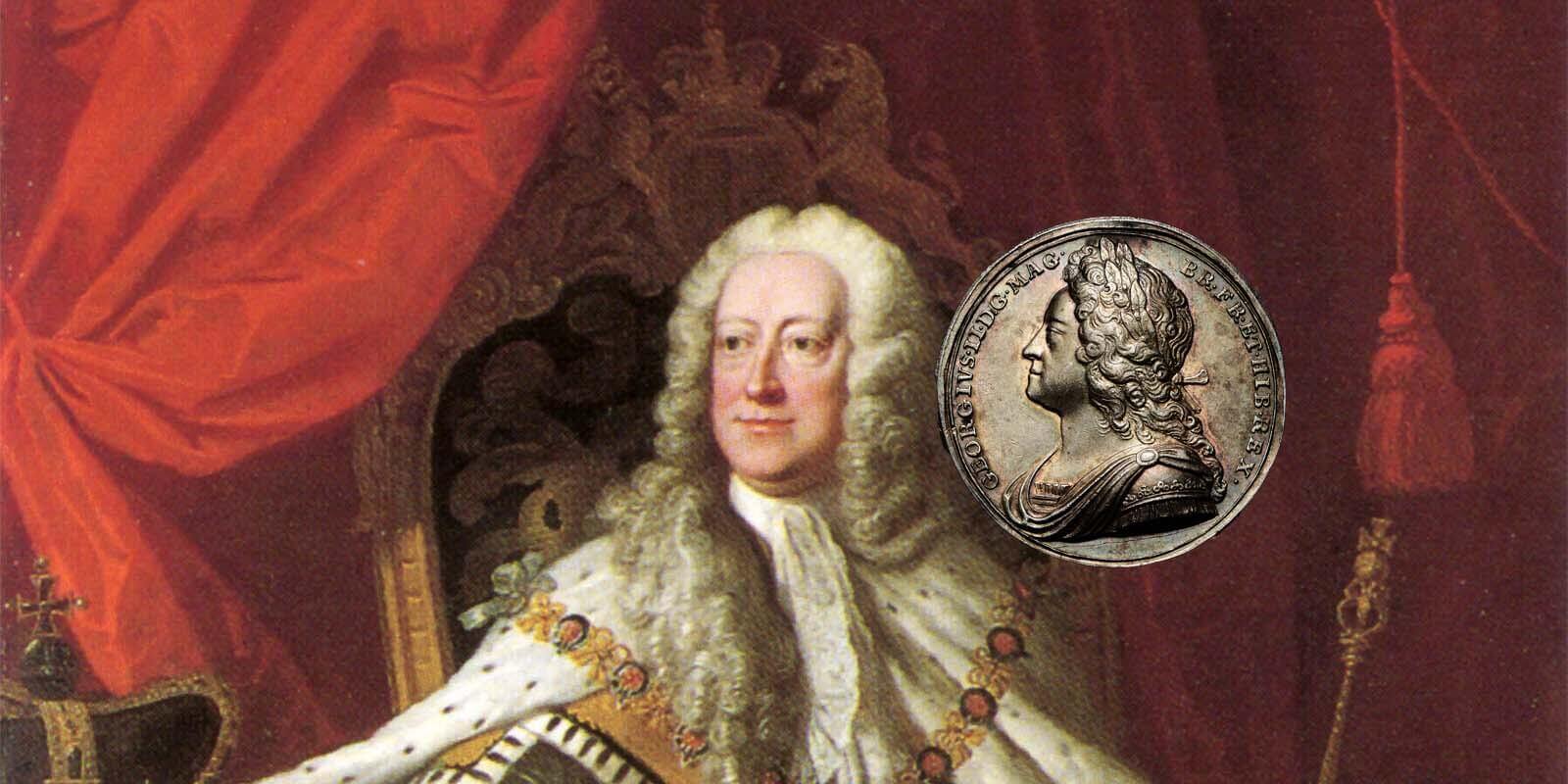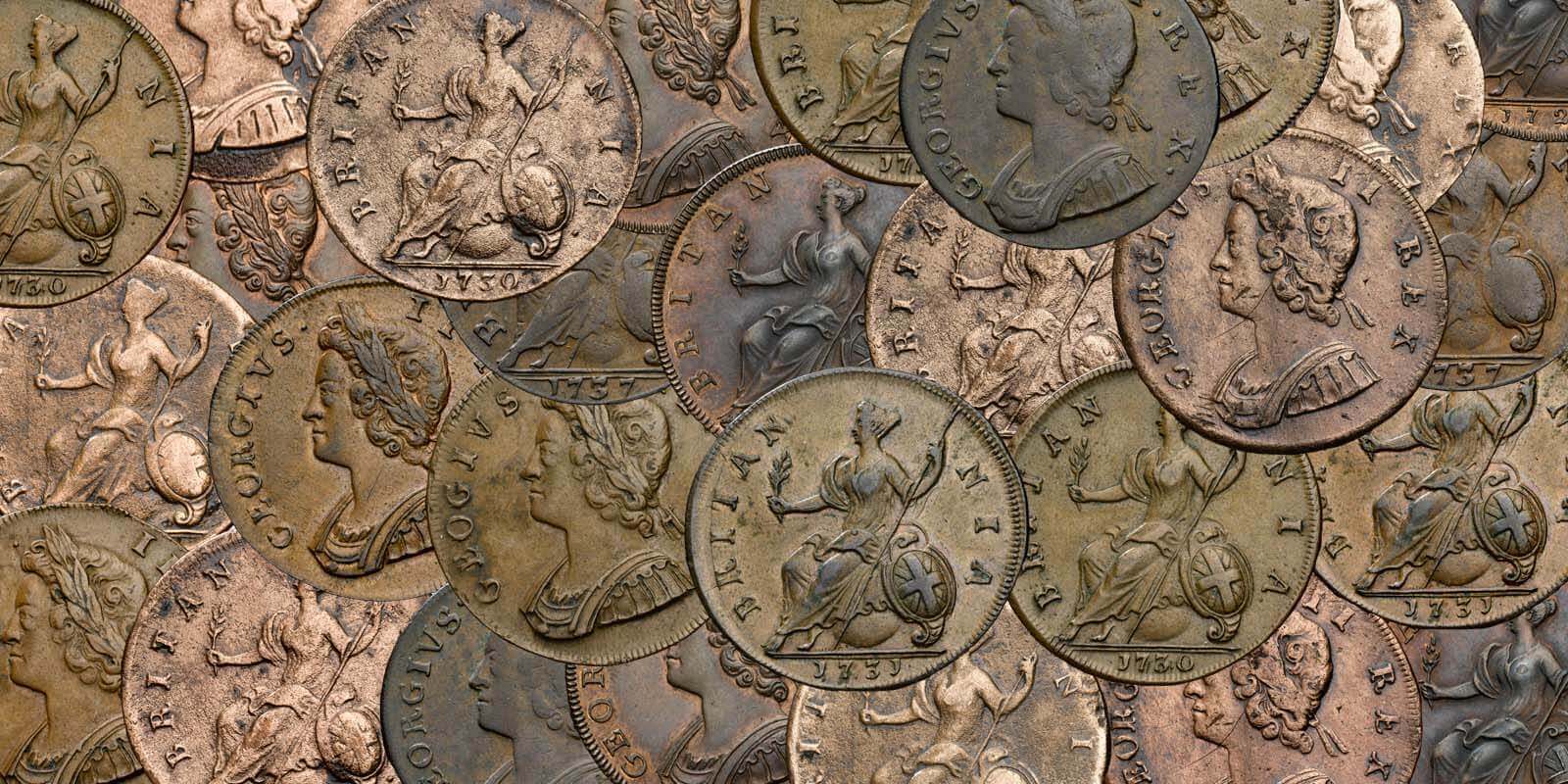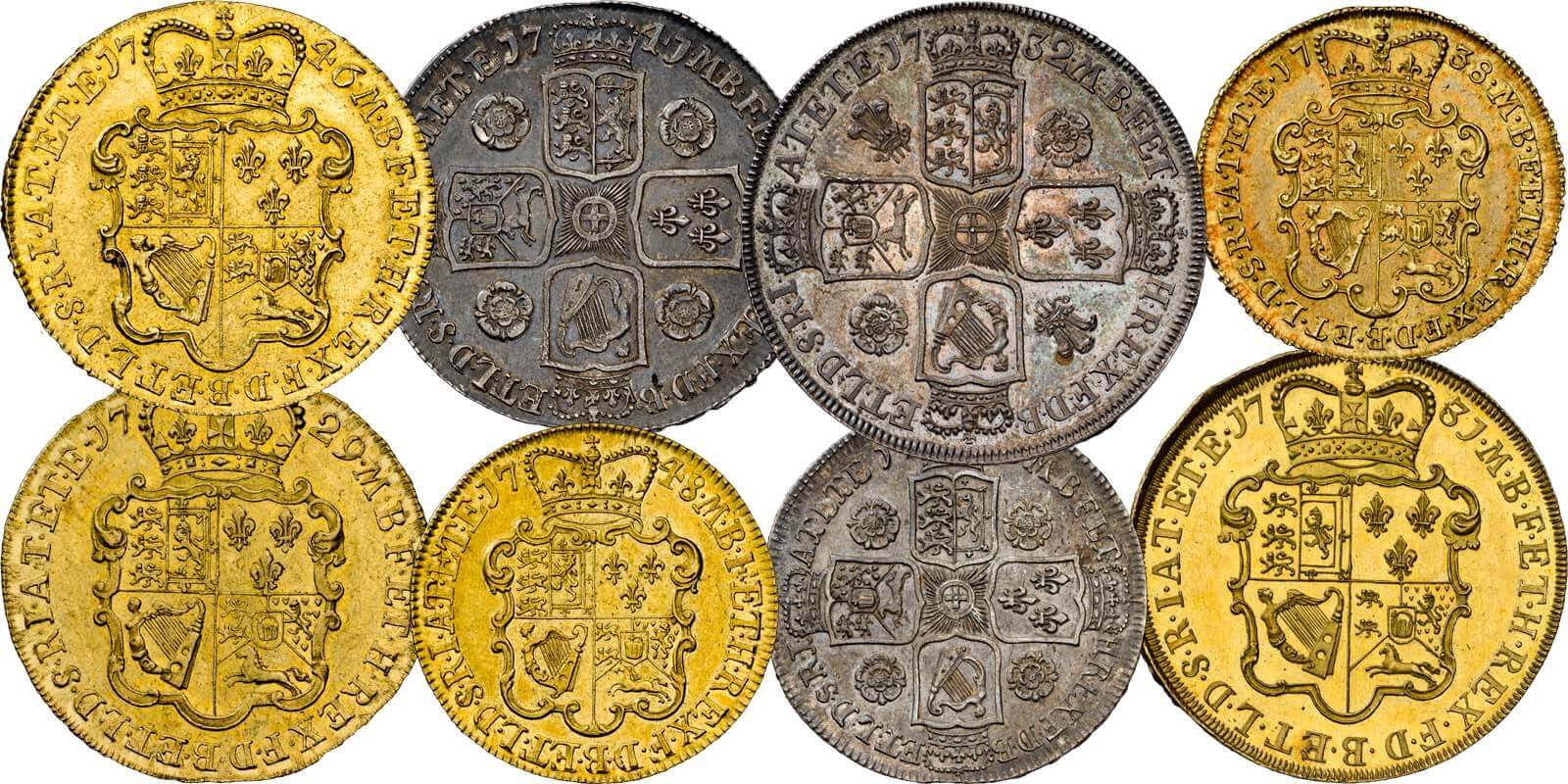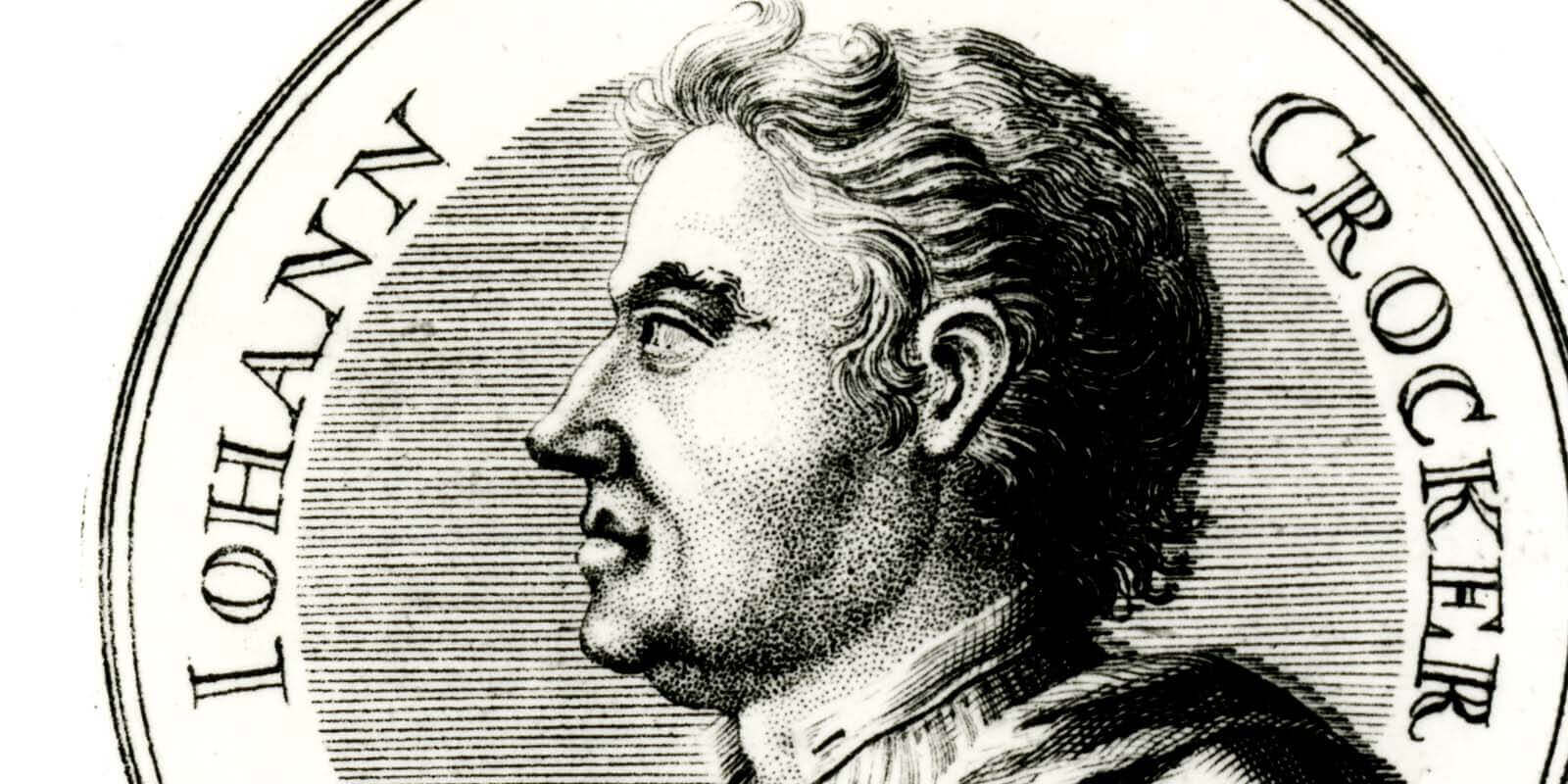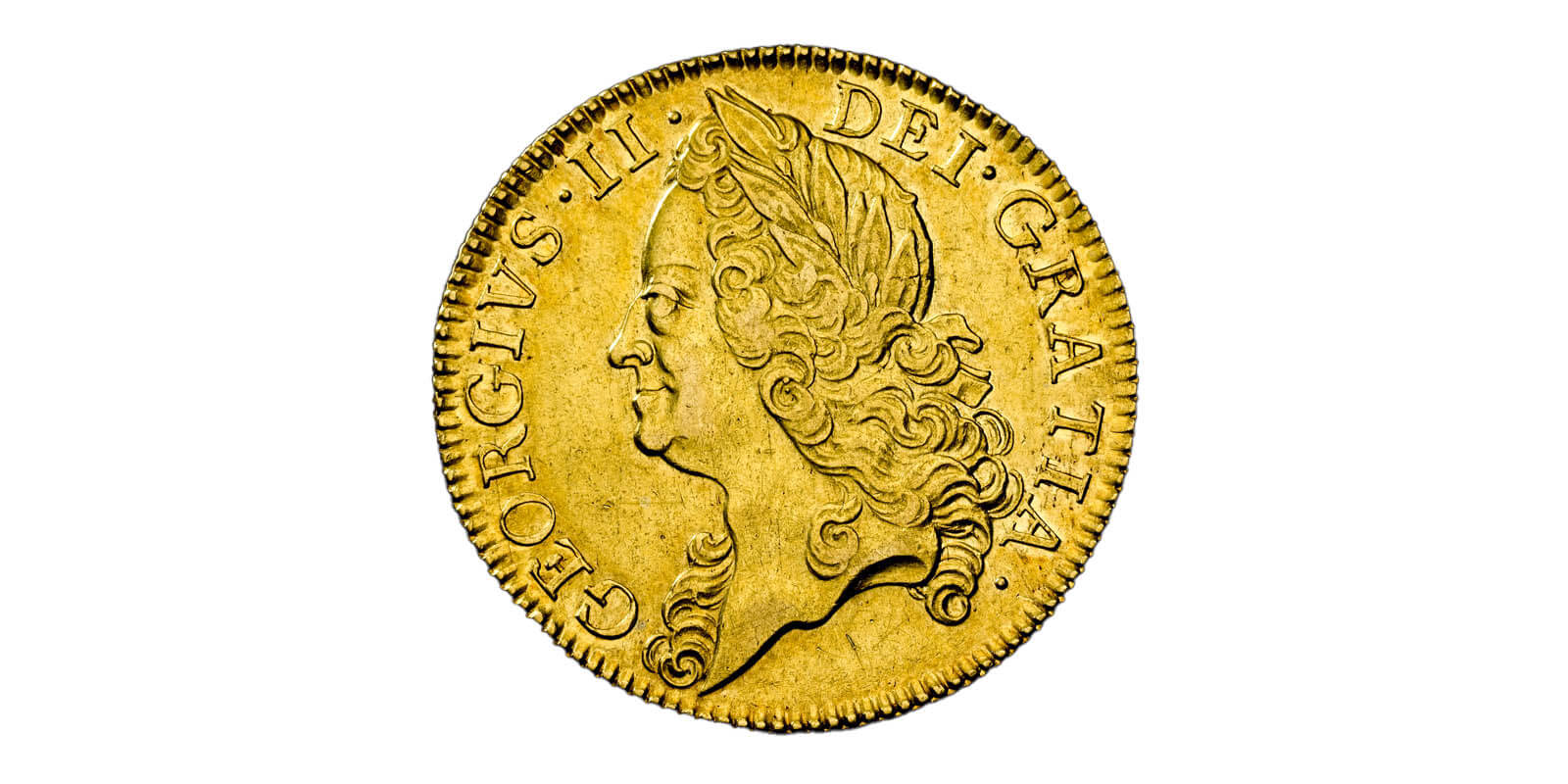George II
Summary
Production at the Royal Mint during the reign of George II was a growing global affair and featured the work of portrait engravers from across Europe. Production of silver coinage continued to decline during this period, in favour of an increased production of gold coinage. Coins of the guinea family, from the large five-guinea piece down to the half-guinea, were struck in gold sourced from around the world, and additional security features were developed for these high-value denominations.
Gold coinage
Gold coins from the guinea family, extending from the large five-guinea piece down to the half-guinea, was struck during the reign. These pieces featured a new reverse with the four separate shields and the Garter Star being abandoned in favour of an ornate single crowned shield which was the work of John Ochs.
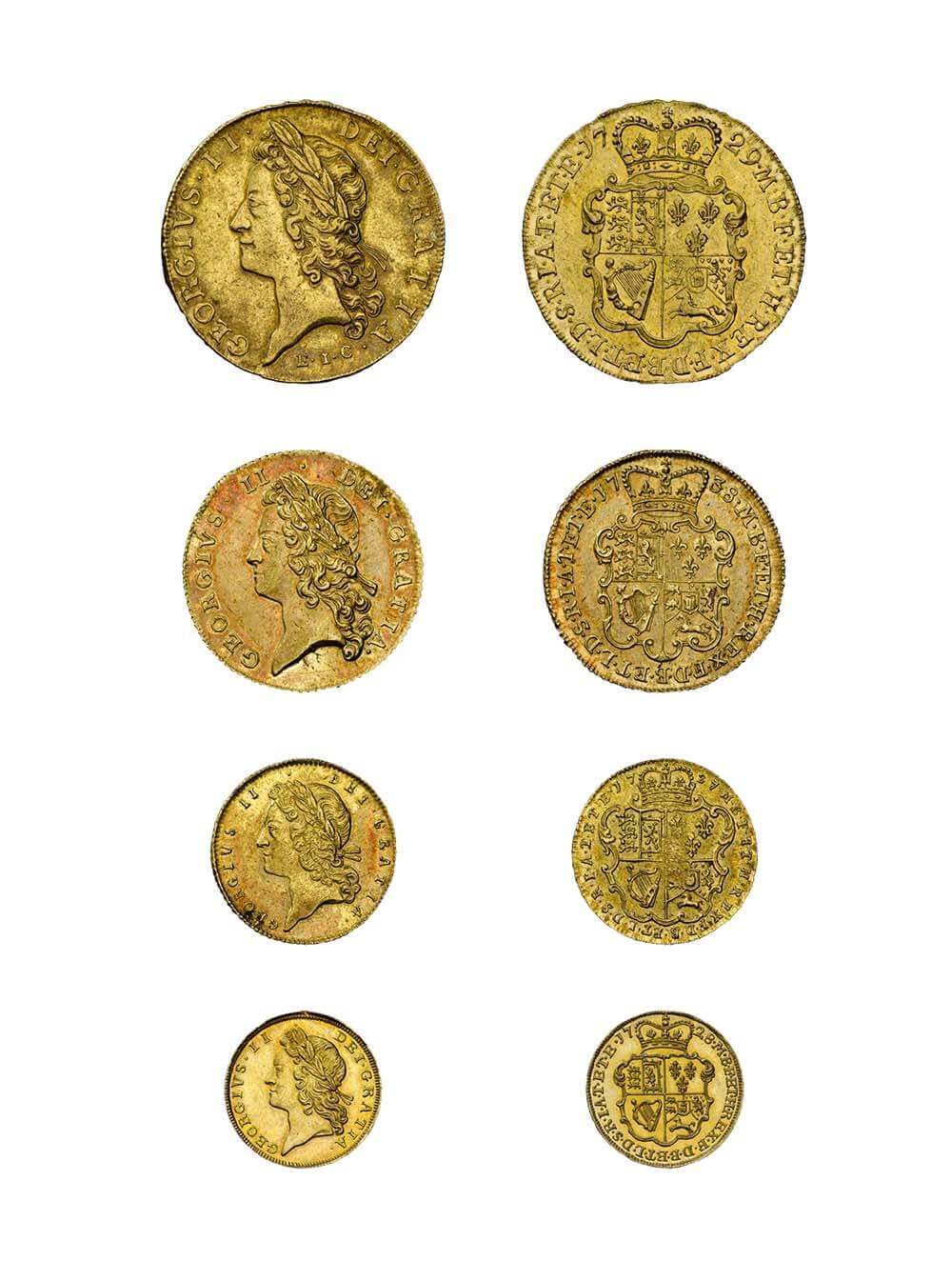
George II guinea family. Five guinea piece (RMM460), two guinea piece (RMM463), guinea (RMM466), half-guinea (RMM471)
The East India Company (EIC) provided gold bullion to the Royal Mint from 1729 to 1739. By Royal Warrant dated November 1729, the Mint was authorised to place the letters EIC under the king’s head on any gold coins struck using gold imported by the Company. It was used on guineas of that year, in 1731, 1732 and 1739. Guineas were also struck in 1745 with the LIMA mark under the king’s head. The mark relates to the area where the gold was originally mined in Peru, and there have been several theories as to how the gold came to the Royal Mint. It is likely, however, that it was brought back to England by the privateers Duke and Prince Frederick who had captured it from French ships which were transporting it back from the Port of Callao.
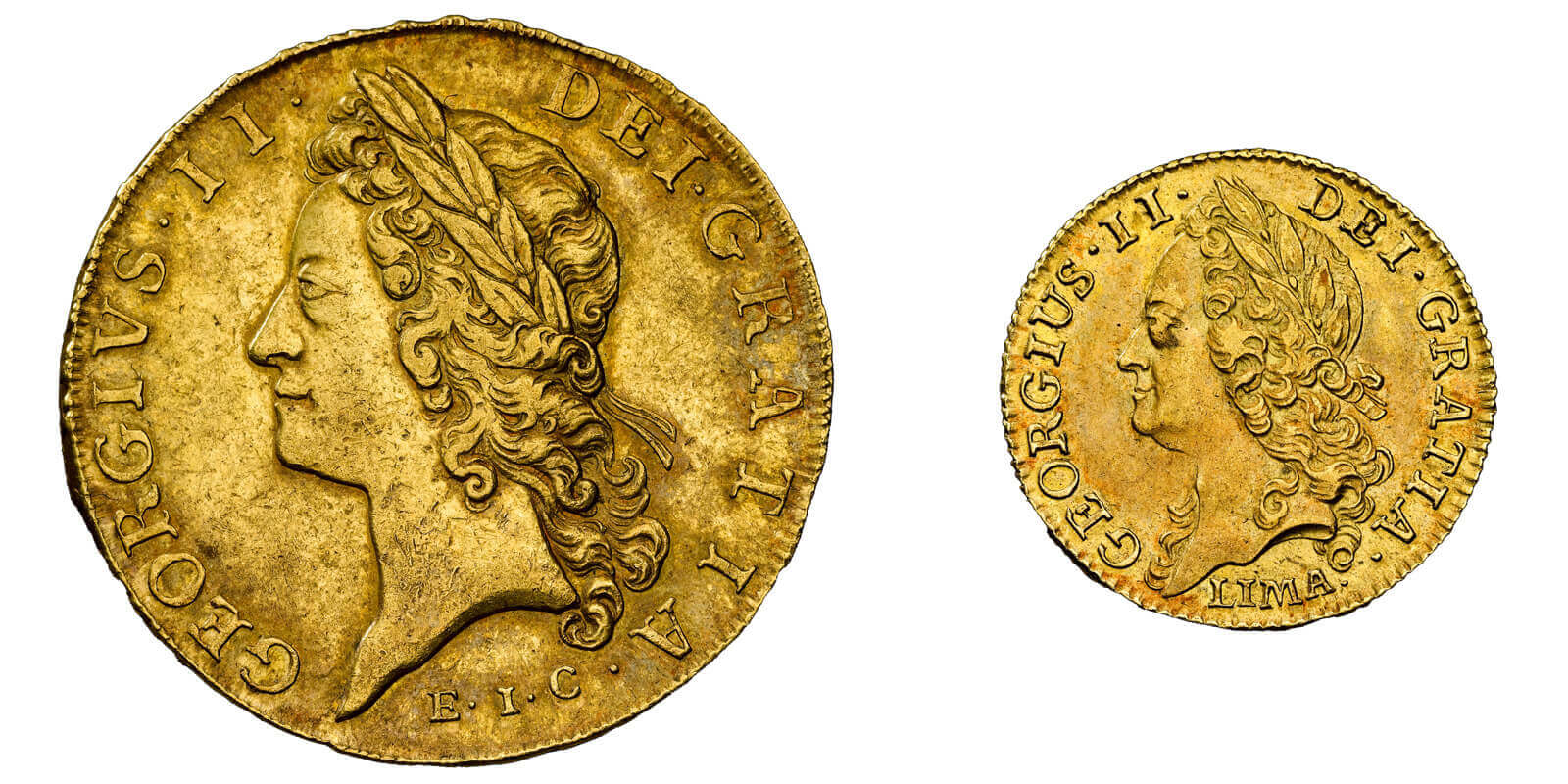
George II five guinea piece (RMM460), guinea (RMM470)
Following a notice for information leading to the prosecution of those involved in the fraudulent practice of filing guineas, a proposition was put forward by Reverend Peter Vallavine which he believed might help combat the problem. Having examined many filed guineas, he noticed that pieces of William and Mary had rarely been maltreated. He attributed this to the lettering being closer to the edge which he believed made it harder to successfully file the edges away without the offence being easily noticed. He suggested that the Mint move the inscription much closer to the rim of the coin, and he further proposed that a curved graining be used on the edge to make it more secure. Both these suggestions were implemented by the Mint, the graining being changed from 1739, but it wasn’t until the introduction of the old head portrait in 1747 that the lettering was made larger and moved much closer to the edge. In appreciation of his ideas, Vallavine received a reward of £100.
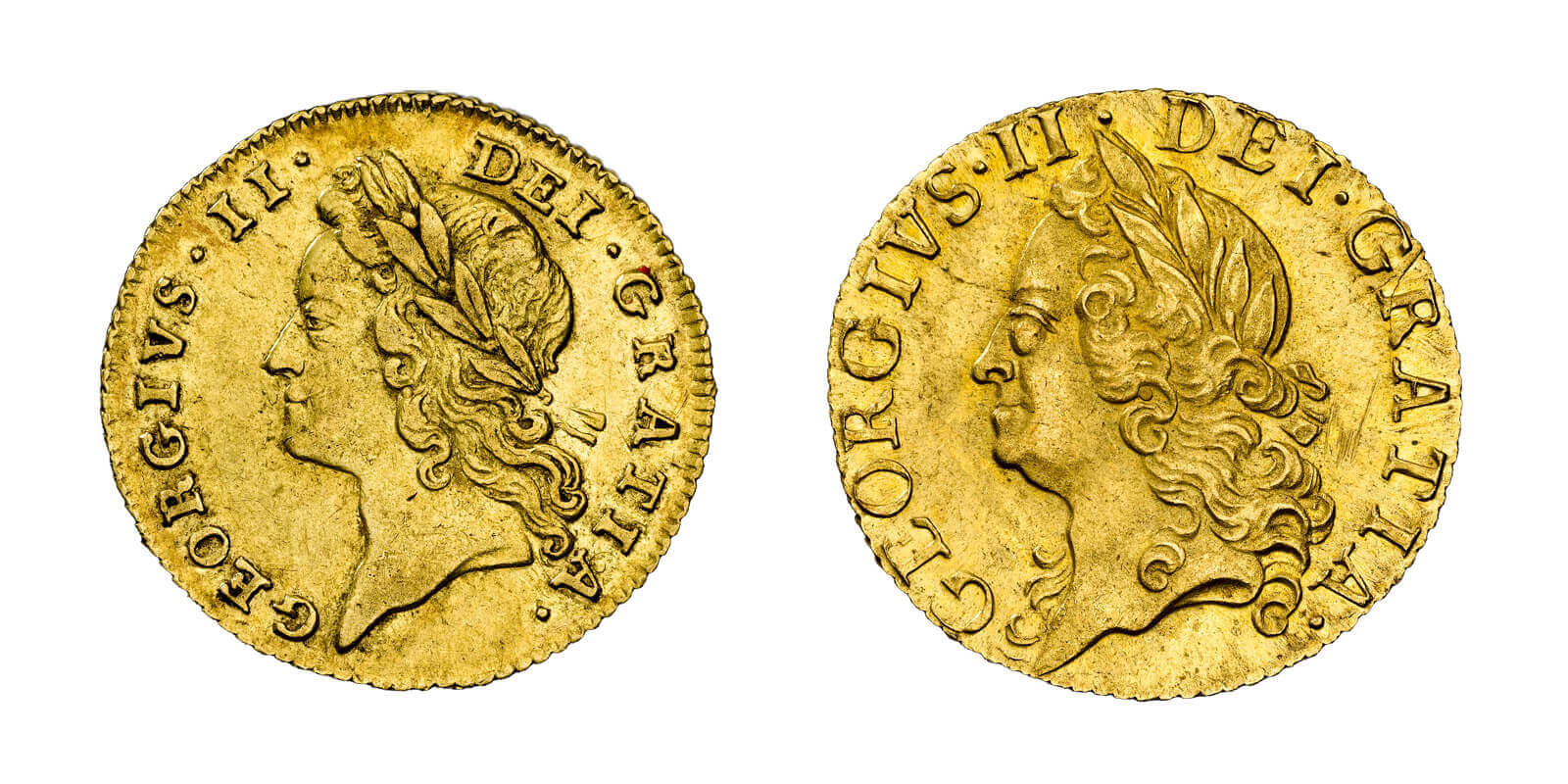
George II half-guinea (RMM472), half-guinea (RMM474)
Whilst hammered silver coins had been replaced with machine struck pieces as part of the Great Recoinage of 1696-1698, hammered gold coins, some of which dated back to the reign of Elizabeth I and beyond, had remained in circulation. These were finally removed from active use in 1733 when their circulation was prohibited by a proclamation of February that year. The Mint re-coined £700,000 into guineas and half-guinea, which equates to approximately £132 million today.
Silver coinage
The sources of silver were still denoted by provenance marks of roses and plumes during the reign.
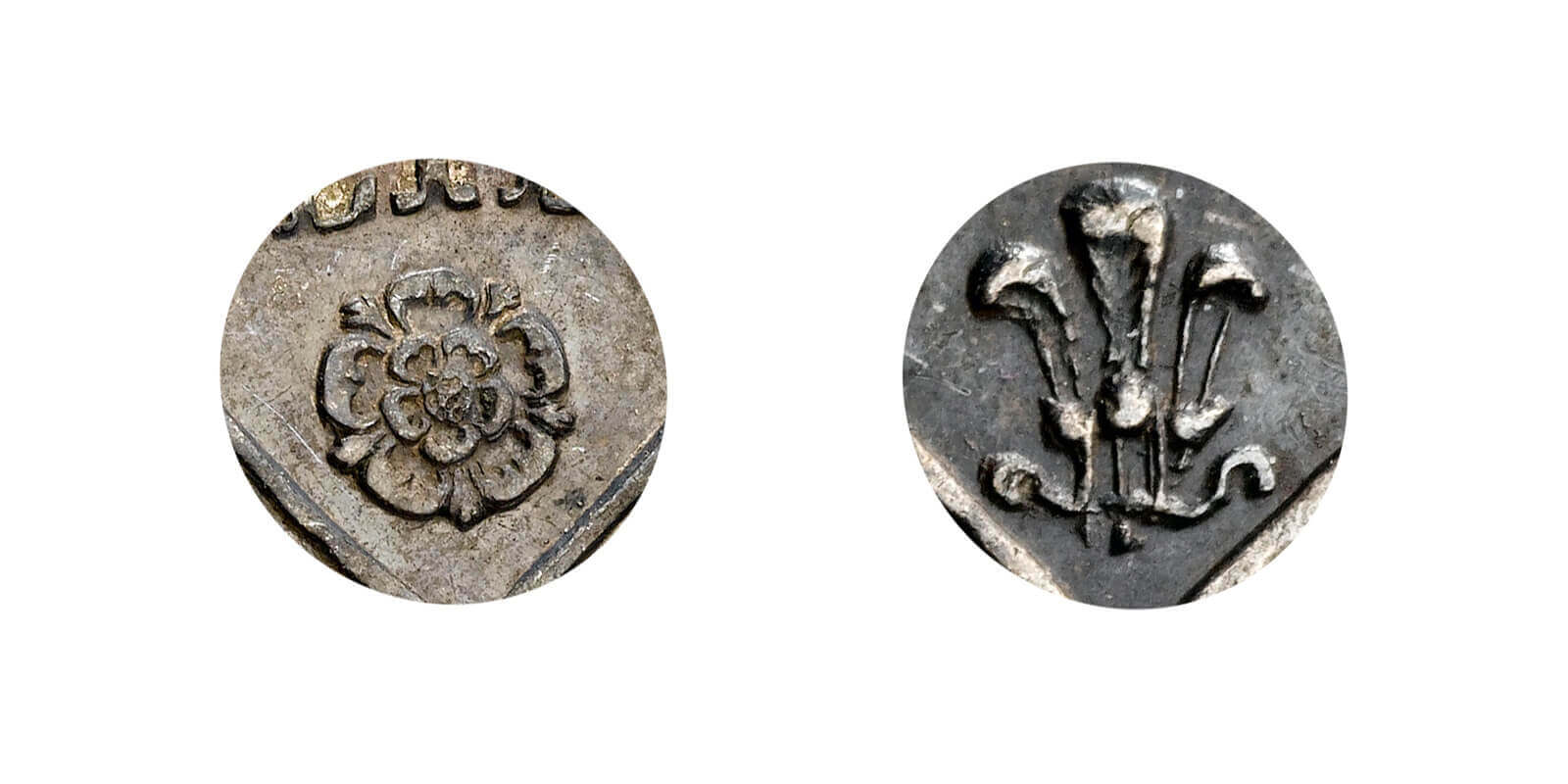
Provenance marks on silver coinage. Rose (left) and plume (right)
Three main types appear on the coinage of George II. Roses – silver from the mines in the West of England. Plumes – silver from the Welsh Copper Company. Roses and Plumes – silver from the Pitcoale and Seacoale company.
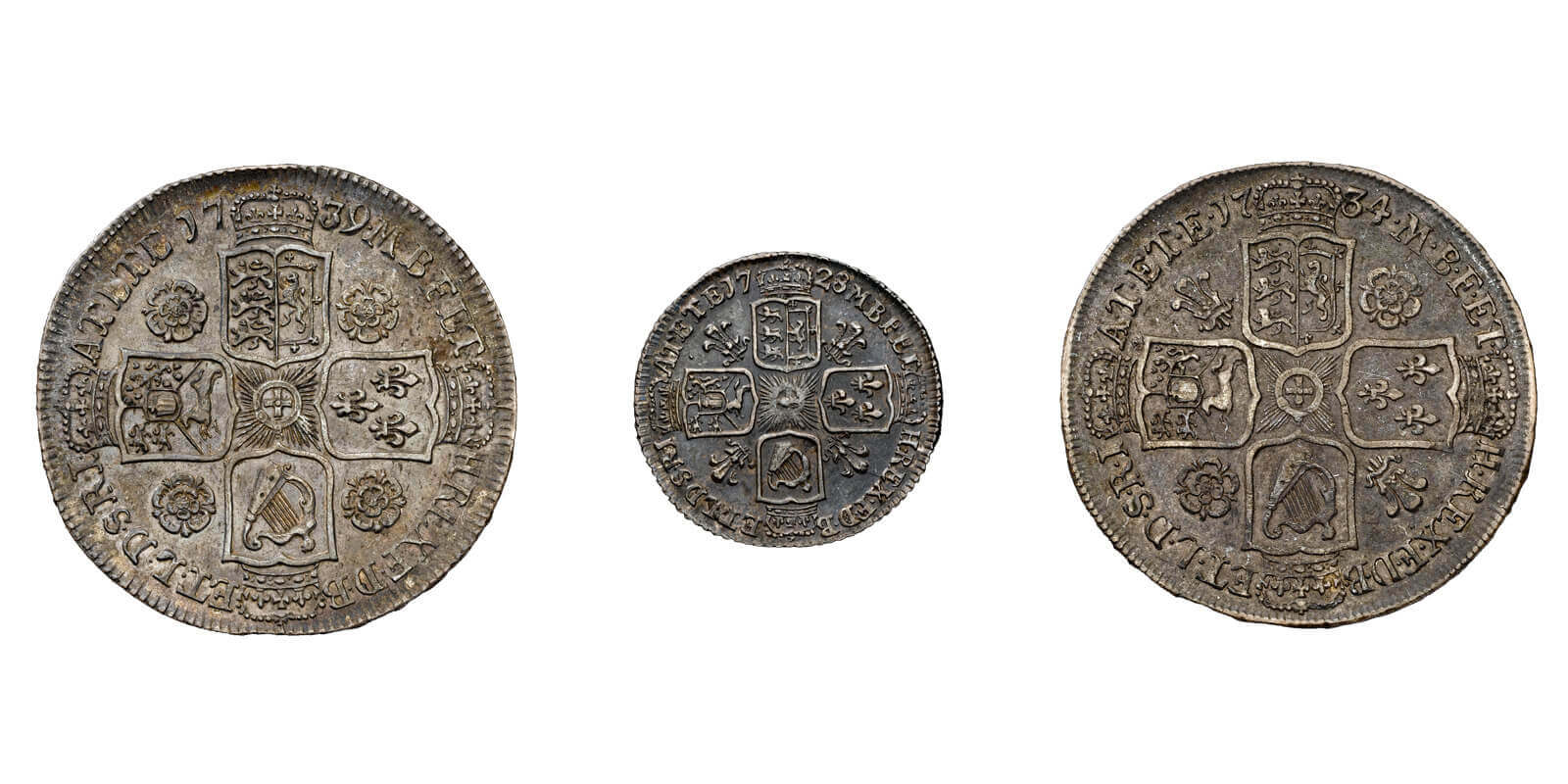
George II half-crown (RMM485), sixpence (RMM518), half-crown (RMM483)
As with the gold coinage, coins bearing the LIMA mark were produced in silver, but most of the silver bears the roses or plumes provenance marks. The reign of George II witnessed the continued decline of silver coin production at the Royal Mint. This was caused by the relative disparity of the gold to silver ratios in different parts of the globe. The large influx of silver from South America to Spain had made it relatively cheap in Europe, particularly when compared with Asia. For companies able to trade with India and China, a healthy profit could be made by buying silver with gold in Europe and then trading that silver for gold in Asia where it was worth relatively more than in Europe.
Silver flowed out of Europe throughout the 18th century and, as it was worth more as bullion than as coin, production of silver coinage dwindled. This decline in silver production was exacerbated by the end of domestic sources of silver. After 1745 supplies of domestic silver dried up apart from one small mintage of West of England silver in 1747, but later issues in 1750-1 and 1757-8 were made from silver obtained overseas. Owing to the difficulty of obtaining silver, coins of 1758 were the last silver pieces to be issued in any quantity for general circulation for nearly 30 years.
An argument could be made that the series of four proof coins – crown, halfcrown, shilling, sixpence and dated 1746 - are the earliest proof set issued by the Royal Mint. The evidence that they should be regarded as a set is less than conclusive, but they exist in roughly equal numbers and appear to have been struck at the same time. Furthermore, there exists a set in what appears to be a contemporary velvet-lined case, but it is curious that 1746 does not mark the introduction of new designs.
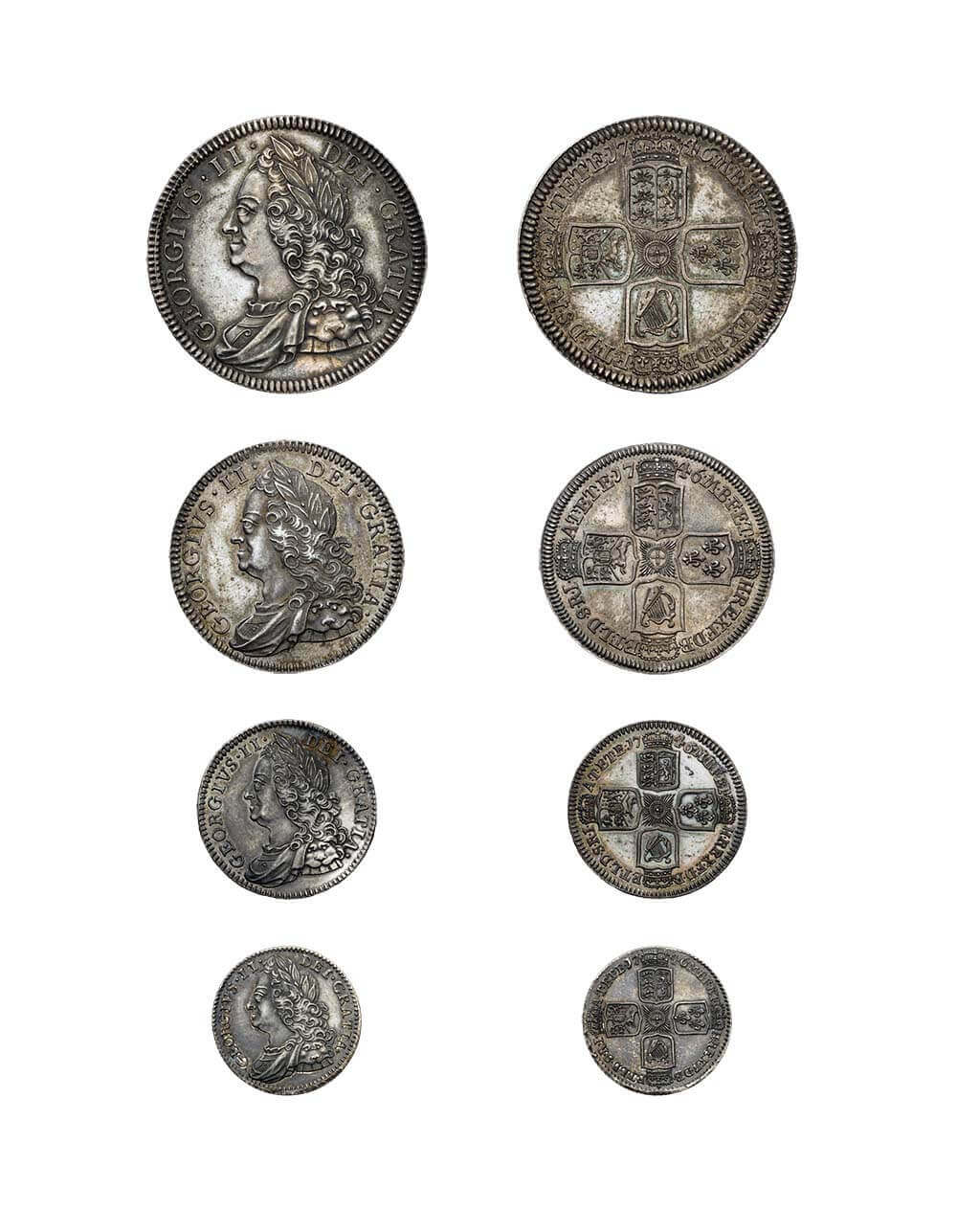
George II proof set. Crown (RMM477), half-crown (RMM490), shilling (RMM510), sixpence (RMM523)
Copper coinage
The copper coinage follows the style of the previous reign. Up until 1739 the pieces depict a cuirassed bust of George II by Croker and after that date coins depict Tanner’s old head. No copper coins were issued after 1754 and, owing to the scarcity of such small change, a great number of light weight counterfeit halfpenny and farthings circulated during this period.
Legend
The arrangement of George II’s titles differed slightly from that of his father. The king’s British titles are removed from the obverse to leave GEORGIVS II DEI GRATIA, although the V of GEORGIVS was replaced by a U on some latter pieces. On the reverse the royal styles appears as M · B· F· ET· H· REX · F· D· B· ET· L· D· S· R· I· A· T· ET· E. This translates as King of Great Britain, France and Ireland, Defender of the Faith, Duke of Brunswick and Luneburg, Arch-Treasurer and Elector of the Holy Roman Empire.
Portrait
The portrait can be split into broadly a younger, intermediate and an older head, although variants of each exist.
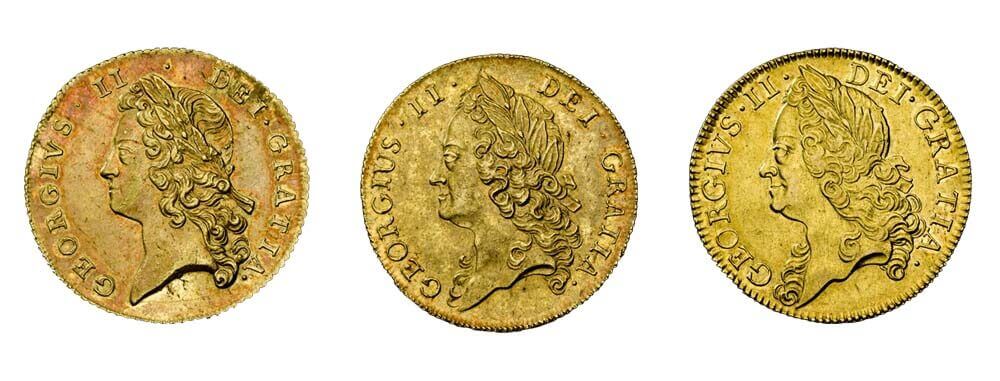
George II two guinea piece (RMM463), two guinea piece (RMM464), two guinea piece (RMM465),
Engravers
John Croker
The younger head of George II is the work of John Croker, who had also designed the coins of Anne and George I. Croker was born in Dresden in October 1670, the son of a woodcarver and cabinetmaker. He was apprenticed to his godfather, who was a jeweller, and came to England in 1691. His career at the Royal Mint began a few years later in 1697 when he was appointed as Assistant Engraver, before becoming Chief Engraver in 1705. With Croker aging, and as he was the only person in the Mint with any experience of producing punches and dies for the obverses of coins, John Sigismund Tanner was appointed as an assistant to Croker in 1729. From this date, and until he became Chief Engraver, Tanner was responsible for the reverse dies.
John Sigismund Tanner
Tanner had also been born overseas in Saxe-Coburg in about 1704. His skills in engraving were developed by working on small items, such as snuff boxes and guns locks, before he came to England in around 1726. By 1739, Croker was 69 and too infirm to have produced the tooling for the new dies depicting an older George II. These were the work of Tanner, who succeeded Croker as Chief Engraver on Croker’s death in March 1741. By 1768 Tanner’s eyesight was failing and, on account of his years of service with the Royal Mint, he was granted a yearly pension of £200 for the rest of his life. Having previously lived in the Tower of London in the Chief Engraver’s residence, Tanner moved out and lived in retirement until his death in March 1775.

